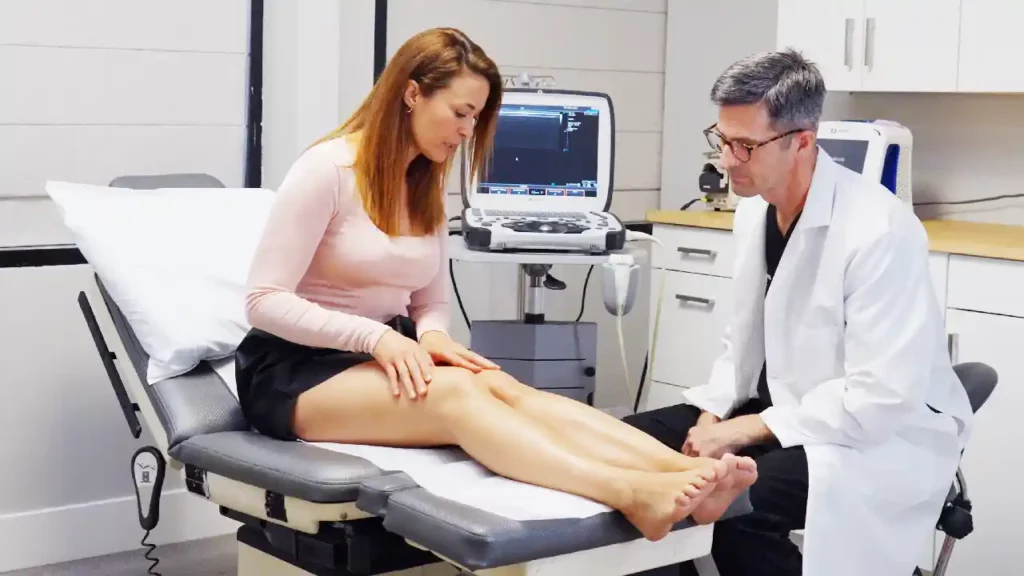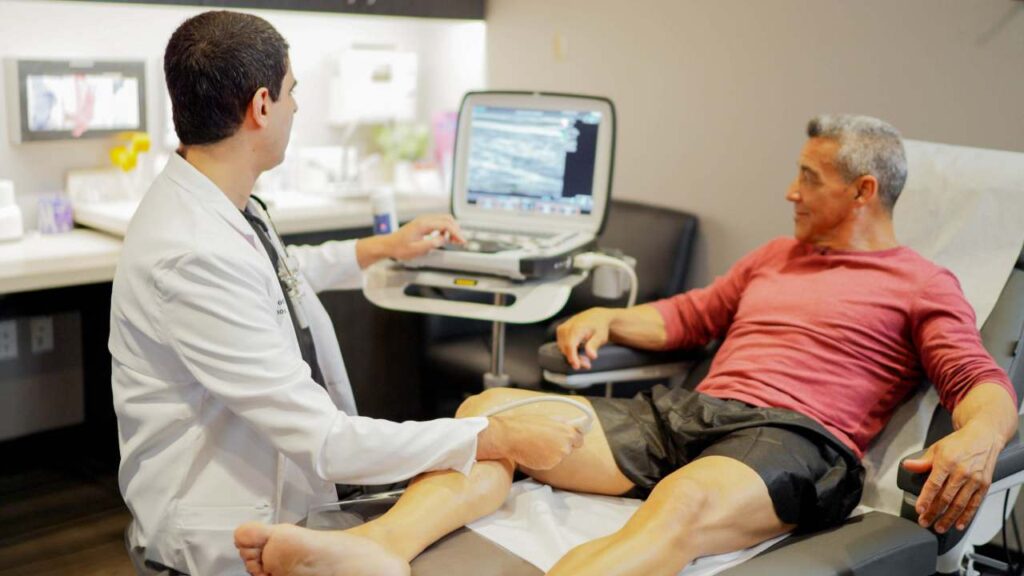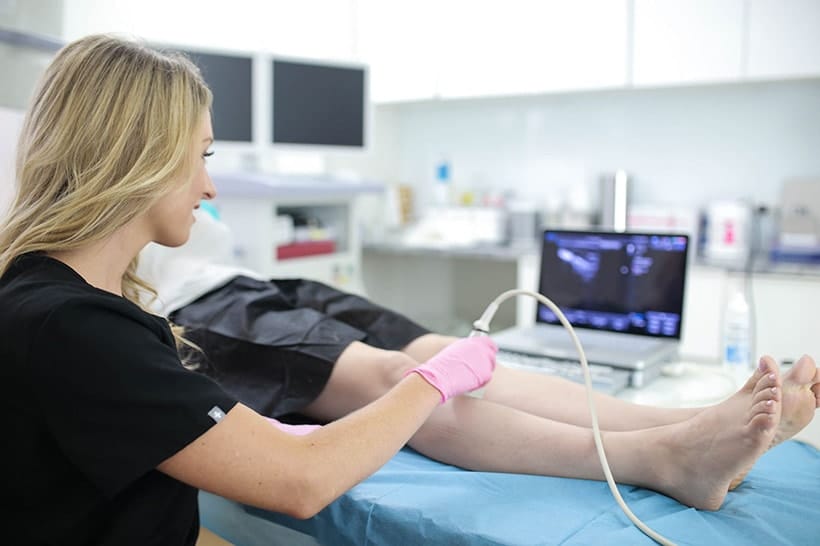If you have thin spider veins, bulging varicose veins, aching or heaviness in your legs, or other related symptoms, you may be suffering from a vein disease. Spider veins and varicose veins are almost always indicative of an underlying vein disease, and the most common one is known as chronic venous insufficiency (CVI). One-way valves in veins direct blood to the heart while keeping it from flowing back out to the limbs, but when the valves become leaky, gravity takes over and blood travels backwards to pool in veins in the legs, leading to chronic venous insufficiency. The venous system cannot do its job of returning blood back to the heart anymore, and over time, the fluid build-up increases pressure in the veins, resulting in the varicose veins you may be experiencing.
In severe cases, dark red/brown patches or ulcers on your skin, known as stasis dermatitis, may appear due to red blood cell breakdown. The ulcers, typically found on your shin or calf, are typically open wounds that heal very slowly since there is not enough blood flow to send platelets and other clotting factors to the area.
Take note of signs and symptoms you are experiencing, and seek out vein treatment SD by reaching out to a spider vein treatment center. At a spider vein treatment clinic, a specialist in venous medicine will check saphenous veins for any valve issues, and for symptoms that you may not have originally mentioned during your appointment (such as itchy or burning veins, aching legs, swelling, etc.) to ensure insurance coverage for your doctor-recommended treatment plan.
After your preliminary evaluation at the vein clinic, the vein doctor will seal off the saphenous veins, which are the underlying veins for most blood flow problems. Treatment for spider and varicose veins used to exclusively be through surgical procedures, but biomedical science innovation has made it possible to treat varicose veins and spider veins through minimally-invasive treatments such as VenaSeal, Radiofrequency Ablation, or Varithena. All of these procedures are low-risk, take less than an hour to perform, and have minimal recovery time.

Treating the Root Cause – Saphenous Veins
VenaSeal is a vein adhesive used to close the saphenous vein in the leg that causes varicose veins, and it doesn’t require any local anesthetic. Once the adhesive is administered, VenaSeal acts to seal the diseased vein and reroute the blood through the healthy veins in your legs.
Radiofrequency ablation is another non-surgical minimally invasive treatment that starts with the administration of a local anesthetic, followed by the insertion of a catheter into the unhealthy vein using an ultrasound. Once the numbing solution is delivered to the length of the vein, the catheter is activated and thermal energy is delivered to the walls of the vein to close them down.
Varithena is a pre-made sclerotherapy foam and is injected into the vein to reduce the appearance and symptoms of varicose veins. The foam, called a Sclerosant, is injected into the damaged veins, which irritates the vein walls, causing them to stick to each other and close the vein. The blood flow is redirected into healthier veins, and eventually, the closed vein gets
reabsorbed into the body, alleviating issues caused by the diseased vein.
Be sure to avoid vein clinics that endorse endovenous laser ablation, which causes an inflammatory reaction in the vein with a laser to create a seal that will reroute blood through other healthy veins. However, unlike the other treatments, endovenous laser ablation has a week-long recovery time, which would require you to wear a compression stocking, and there is a lot more pain and discomfort resulting from this procedure than the previous treatments mentioned.
Treating the Visible Surface Spider Veins
As described above, vein doctors close the saphenous veins then reroute the blood through healthier veins to restore the proper direction of blood flow and fix the deeper issue. After this treatment of the underlying vein disease, the doctor can move on to improve the appearance of surface-level spider veins. The vein doctor will use sclerotherapy, a non-surgical minimally-invasive treatment that requires the injection of medicine using tiny needles to improve the appearance of spider veins in just one month. Just like the other treatments, the whole procedure takes less than 30 minutes and causes minimal irritation for a day, but you can return home or to work after your appointment at a vein treatment clinic because there is no anesthesia or recovery time involved.
If you’ve found yourself seeking vein treatment SD, you’re likely to be looking for a vein center near me to treat a vein disease, like chronic vein insufficiency, varicose veins and spider veins, or deep vein thrombosis, just to name a few. When choosing a vein center, it is important to make sure that they offer minimally-invasive treatment methods.
Dr. Billy Schoenfield and Dr. Carly Guthrie at the San Diego Vein Treatment Clinic are both Harvard-trained and double board-certified vein doctors who are highly experienced and well-versed in vein care. They are kind and approachable, and prioritize patient care above all else, as they strive to provide everyone who sets foot in their vein treatment center with a pleasant visit.
Our clinic in San Diego is located in a beautiful neighborhood called La Jolla, near the Torry Pines Beach State Park and Westfield UTC Shopping Center. End your search for “vein treatment SD” and set up an appointment to come visit us! You can call our office, where a friendly staff member would be happy to speak with you, or book an appointment online.






